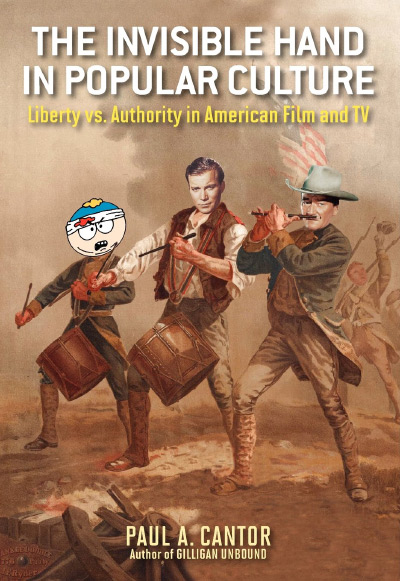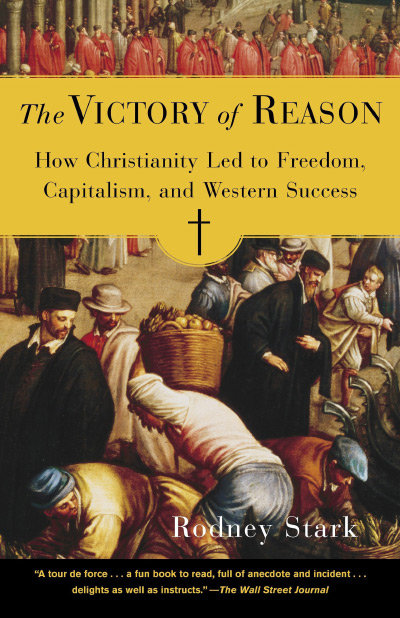In Show and Biz: The Market Economy in TV Series and Popular Culture (2000–2020), editors Maria Blanco and Alberto Mingardi bring together scholars from disparate disciplines to offer insights into how business, especially entrepreneurship, has been depicted in recent television series. This edited volume of fifteen chapters covering fourteen shows is a much-needed update to the literature on economics and popular culture. It would be a welcome addition for the classroom and for the general reader.
A concise introduction to the economic theory of entrepreneurship is provided in the preface, where Blanco and Mingardi summarize and compare the contributions of Israel Kirzner and Joseph Schumpeter. Although inclusion of Frank Knight’s entrepreneur would have made this introduction more robust, it sets the stage for the chapters to follow. The chapters draw heavily from the Austrian economic tradition of the study of market processes and from Deirdre McCloskey’s work on the intersection of culture, virtue, and commerce.
We have known since the writings of Adam Smith that negative attitudes about businessmen can impede the division of labor and, hence, the benefits of trade. A theme of the book is whether television depictions of business and entrepreneurship is favorable or not. Often, one’s interpretation depends on one’s a priori view of capitalism. Critics of the system may view a show as depicting how capitalism pollutes human society. Free-market supporters may look deeper to find positive messages of the virtues of capitalism. How business is portrayed on television may seem inconsequential, but Blanco and Mingardi point out that stories are a good way for people to learn and that ideas on television reflect the culture of the times.
It is noted that the shows in the volume were aired during the emergence of the video-on-demand streaming model of television. No longer did a show’s creators need to appeal to the general audiences of the Big Three networks. Shows can target particular audience segments rather than the median viewer and still be successful, so they may be able to promote more extreme points of view.
Business is generally shown in an unfavorable light in popular culture, and that is true for many of the series analyzed in Show and Biz. The most successful of the series covered by the book, Mad Men, is described as an “anti-capitalist ode” by Luigi Marco Bassani. Mad Men is especially focused on how advertising promotes consumerism, epitomized by the controlling nature of the main character, Don Draper. Aaron Sorkin’s works are analyzed by Carlos Rodriguez Braun with a focus on The Newsroom, which is full of criticisms of free markets and business, but praise for government interventions, even from the economics reporter in the series.
Two chapters delve into the corrupt relationship between capitalism and government. In Narcos, explains Fernando Claro, we can learn about legitimate business practices and entrepreneurship by observing illegal drug markets in Mexico. However, a theme of the series is that businessmen as well as politicians in this industry are corrupt “because they deal with an already corrupted market” (p. 234). The series Billions depicts the finance industry in a typically ruthless way. Carlo Amenta explains that rather than being portrayed as a way to make people better off, finance is shown as a way to take advantage of people. As in Narcos, the government overseers are as corrupt as the businessmen.
Capitalism also takes the blame in Snowpiercer, a TV series that was also a movie and began as a graphic novel. It is set in a post-apocalyptic world, presumably caused by capitalism run amok, with a fixed supply of goods very unevenly distributed among the survivors. Alberto Mingardi explains that capitalism is blamed for this inequality even though the story is set in “a noncapitalistic situation” (p. 261). The pie here is fixed, so we have a lifeboat situation on our hands with little possibility of capitalism working to promote prosperity.
A few shows in the volume give us a mixed view of capitalism. The Wire, with its focus on criminal activity and police enforcement in Baltimore, mainly criticizes capitalism as resulting in systemic inequalities. Stefano Adamo argues, however, that a subplot involving the second-in-command of the drug organization (Stringer Bell) demonstrates that the problem is not capitalism, but rather the fact that institutions needed for a free market to work are absent in the world of The Wire. Interestingly, there is explicit reference to economic theory in the show. Stringer takes the advice of his community college economics professor to improve his drug dealings, and a copy of Adam Smith’s Wealth of Nations is seen in the collection of books in Stringer’s apartment.
Despite Parks and Recreation being set in a government office, to Dylan Pahman it offers us a “mixed-but-positive portrayal of private enterprise” (pp. 155–56). After providing a concise summary of the insights of Knight, Schumpeter, and Kirzner, Pahman takes us through the entrepreneurial exploits of the characters, some successful and some not, and ultimately concludes that entrepreneurship needs “virtue and community” (p. 172).
Two series examine technology markets. StartUp offers a negative portrayal of the use of technology, according to Irene Correas Sosa. Although there may be benefits from innovations such as cryptocurrencies, these are overshadowed by its links to the dark web. Nikolai G. Wenzel describes the positive lessons we can learn about business and entrepreneurship from Halt and Catch Fire, which is set in the era of the rise of personal computers and the internet.
Manuel Santos Redondo maintains that Gossip Girl portrays business in a positive light, albeit in an overly simplistic and caricatured way: the successful and rich characters are glamorous. The important contribution of this chapter, however, is the description of the business model that Gossip Girl represents. Created at the dawn of our social media world, the series was part of a “package” of multimedia, beginning with a series of novels serving as the basis for the TV show. Product placement deals and corporate sponsorships offered viewers a way to interact with the show outside of viewing time through social media. This type of franchising has been used for subsequent films and TV series targeted mostly to teen girls and young women.
There are two chapters devoted to Deadwood, a show set in a western mining camp. The chapter by Michael Valdez Moses explains that while the show could be interpreted as a portrayal “of the evils of commercial society,” on closer examination, the show contains themes of the civilizing nature of commerce. Trade in the camp creates wealth, but trade also leads to interdependencies that result in the formation of civic society. The profit motive leads to less discrimination (here a mention of Gary Becker’s theory would have been helpful). The show also illustrates the Public Choice theory of special interests and Leviathan. The second Deadwood chapter (a collaboration by Bart J. Wilson, Nicholas A. Callen, Jan Osborn, Max Schartz, and Colin White) continues with the theme of the civilizing nature of commerce, focusing on how the series relates to McCloskey’s trilogy, Bourgeois Virtues, Bourgeois Dignity, and Bourgeois Equality.
The intersection of ethics and capitalism is deftly explored by Sarah Skwire, who describes the world of the science fiction/western Firefly as “relentlessly entrepreneurial.” Firefly follows a crew on a transport ship that facilitates many different types of trade. Some of this activity slips into the more questionable realm of what might be called repugnant markets, and the viewer is challenged to consider the relationship between entrepreneurship and norms.
Nur Baysal explains how the characters and story lines in Gilmore Girls celebrate entrepreneurship. Characters that exhibit an entrepreneurial bent end up being fulfilled and successful, while those that take a safer route end up stagnating in frustration. Gilmore Girls stands out as a show that includes multiple explicit references and discussions of economic theories owing to the inclusion of an economics professor as one of the characters.
The series with the most positive portrayal of capitalism and entrepreneurship is Shark Tank, analyzed by the late Paul Cantor, to whom the book is deservedly dedicated. In this reality show, replicated across the globe, entrepreneurs pitch their business ideas to possible investors (the sharks). The sharks insist on reviewing traditional business metrics, but are also interested in the backstories of the contestants. Cantor explains that in this way the show humanizes business while “presenting the capitalist as hero.” I find it fitting that of all the shows discussed in Show and Biz, it is a reality show that comes closest to capturing the true essence of capitalism, that it is a force for good. In contrast, the anticapitalist views on television are fictional creations from the minds of Hollywood writers.
In their preface, the editors explain the significance of the time period covered by this volume. The 2007–2008 financial crisis, despite its roots in economic misregulation, ushered in a crisis of faith in capitalism among the public. It is not surprising, then, to see this doubt permeate some of the television series of the time. On the other hand, they maintain that in the 2010s a fascination for entrepreneurs such as Jeff Bezos and Elon Musk from the tech sector arose, and many of the series in the book include these rags-to-riches type of heroes. Show and Biz offers the reader, even those who have not seen the shows catalogued, important stories about how business contributes to human flourishing.
| Other Independent Review articles by Michelle Albert Vachris | ||
| Fall 2024 | My Journeys in Economic Theory | |
| Winter 2020/21 | Human Nature and Civil Society in Jane Austen | |
| Winter 2020/21 | Philanthropic Exchange in Ralph Ellison’s Invisible Man | |
| [View All (4)] | ||


















